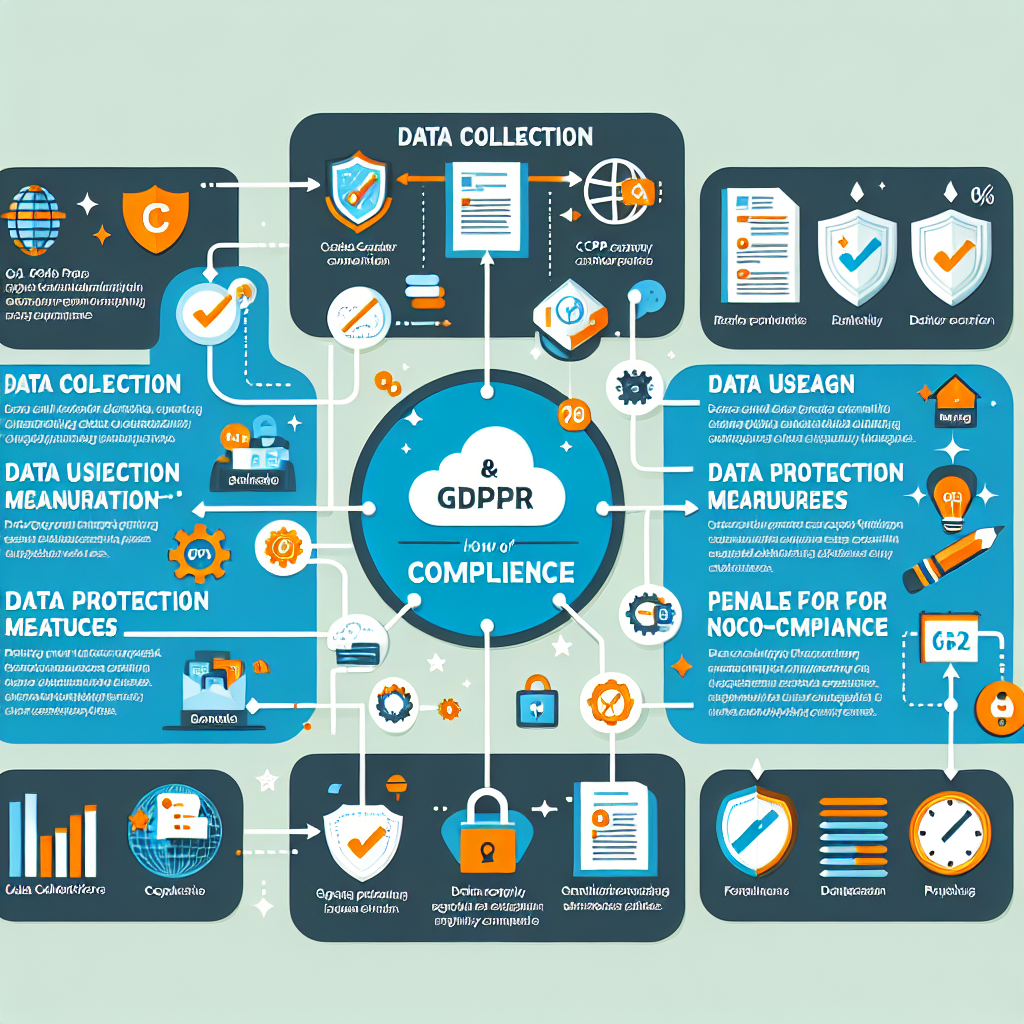How to Comply with GDPR and CCPA Cybersecurity Laws

In today’s digital age, data privacy and cybersecurity have become paramount for businesses operating online. Two of the most influential laws governing data protection are the General Data Protection Regulation (GDPR) in the European Union and the California Consumer Privacy Act (CCPA) in the United States. Both laws aim to safeguard consumer data and enforce strict standards for how businesses collect, store, and manage personal information. For organizations looking to remain compliant, understanding and implementing the requirements of these regulations is crucial.
Understanding GDPR and CCPA
GDPR: Enacted in May 2018, GDPR applies to any organization that processes the personal data of EU residents, regardless of where the company is located. It emphasizes transparency, accountability, and the rights of individuals over their personal data. Key principles include data minimization, lawful processing, and the requirement for explicit consent.
CCPA: Effective January 1, 2020, CCPA applies to businesses that operate in California or serve California residents and meet certain thresholds (e.g., annual revenues exceeding $25 million). It focuses on granting consumers control over their data, including the right to know what data is collected, opt out of data sales, and request deletion.
Steps to Comply with GDPR and CCPA
1. Understand Your Data Flow
- Conduct a thorough audit of all personal data your business collects, processes, and stores.
- Map out data flows to identify where sensitive information resides, how it is accessed, and who has access to it.
2. Establish a Privacy Policy
- Create a clear privacy policy that outlines what data is collected, how it is used, and consumers’ rights under GDPR and CCPA.
- Regularly update the policy to reflect changes in regulations or business practices.
3. Implement Consent Mechanisms
- GDPR requires explicit consent before collecting personal data. Ensure your website or app has opt-in mechanisms for data collection.
- Under CCPA, provide a “Do Not Sell My Personal Information” option prominently on your website.
4. Strengthen Data Security Measures
- Use encryption, firewalls, and secure storage solutions to protect personal data.
- Implement regular vulnerability assessments and penetration testing to identify and address potential security risks.
5. Enable Consumer Rights
- GDPR gives consumers the right to access, rectify, and delete their data, while CCPA grants rights to know, delete, and opt out of data sales. Build systems to facilitate these requests efficiently.
- Verify the identity of consumers making data requests to prevent unauthorized access.
6. Train Your Employees
- Educate staff on the importance of data privacy and security.
- Ensure team members understand the requirements of GDPR and CCPA and know how to handle sensitive information responsibly.
7. Appoint a Data Protection Officer (DPO)
- GDPR mandates appointing a DPO for companies that process large amounts of personal data. Even if not required, having a DPO can help manage compliance efforts effectively.
8. Monitor Third-Party Vendors
- If you share data with third-party vendors, ensure they comply with GDPR and CCPA standards.
- Establish contracts that explicitly outline their responsibilities regarding data protection.
9. Prepare for Breach Notifications
- GDPR requires notifying authorities within 72 hours of a data breach, while CCPA requires notifying affected consumers “in the most expedient time possible.”
- Develop a robust incident response plan to handle breaches efficiently and transparently.
10. Stay Updated
- Privacy laws evolve, and new regulations may emerge. Regularly review updates to GDPR, CCPA, and other relevant laws to ensure ongoing compliance.
Conclusion
Complying with GDPR and CCPA is not just about avoiding fines; it’s about building trust with your customers and demonstrating your commitment to protecting their personal data. By implementing the right systems, policies, and practices, your business can thrive in an increasingly privacy-conscious world. Remember, compliance is an ongoing process that requires vigilance, adaptation, and a proactive approach to cybersecurity and data protection.

